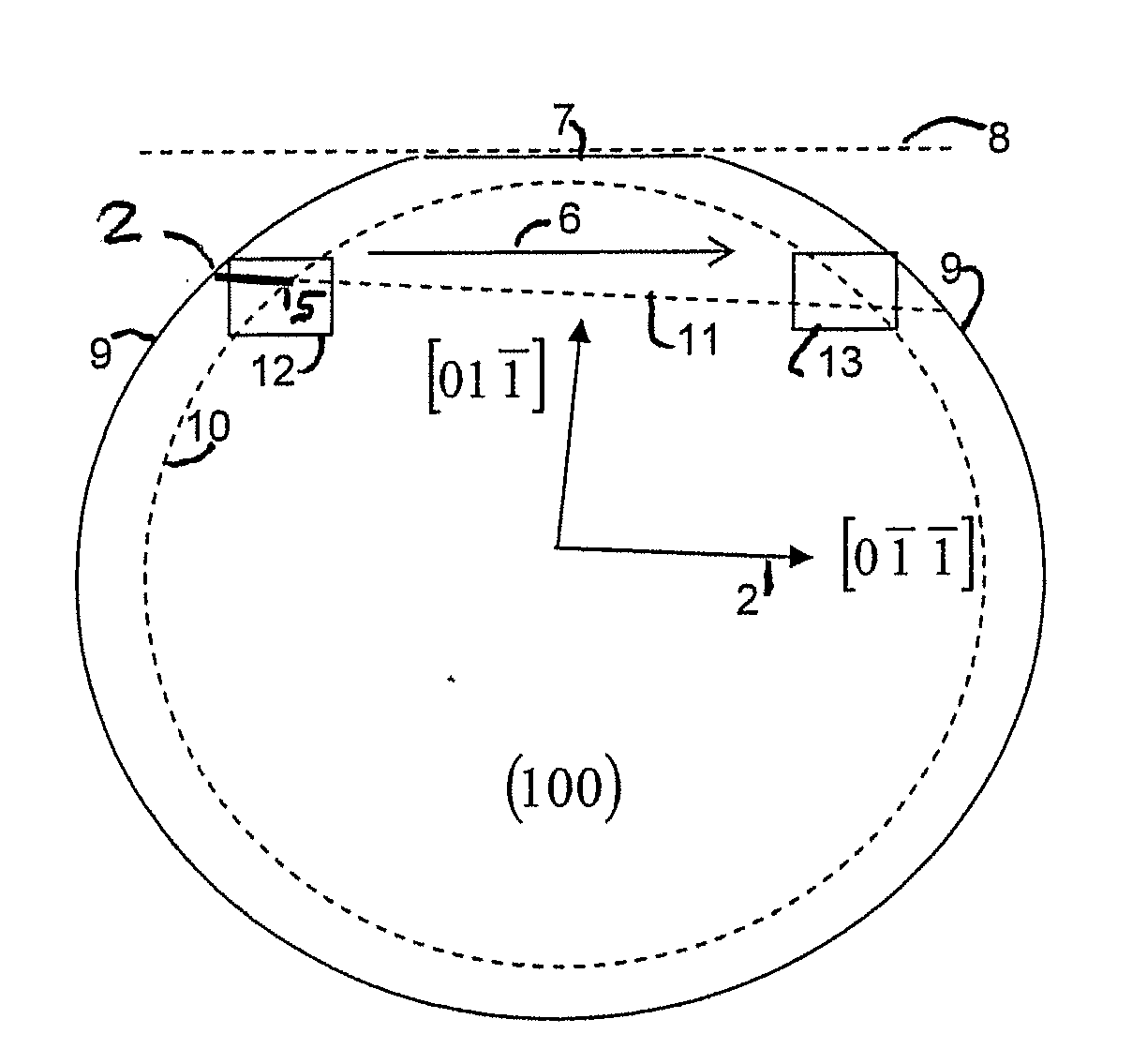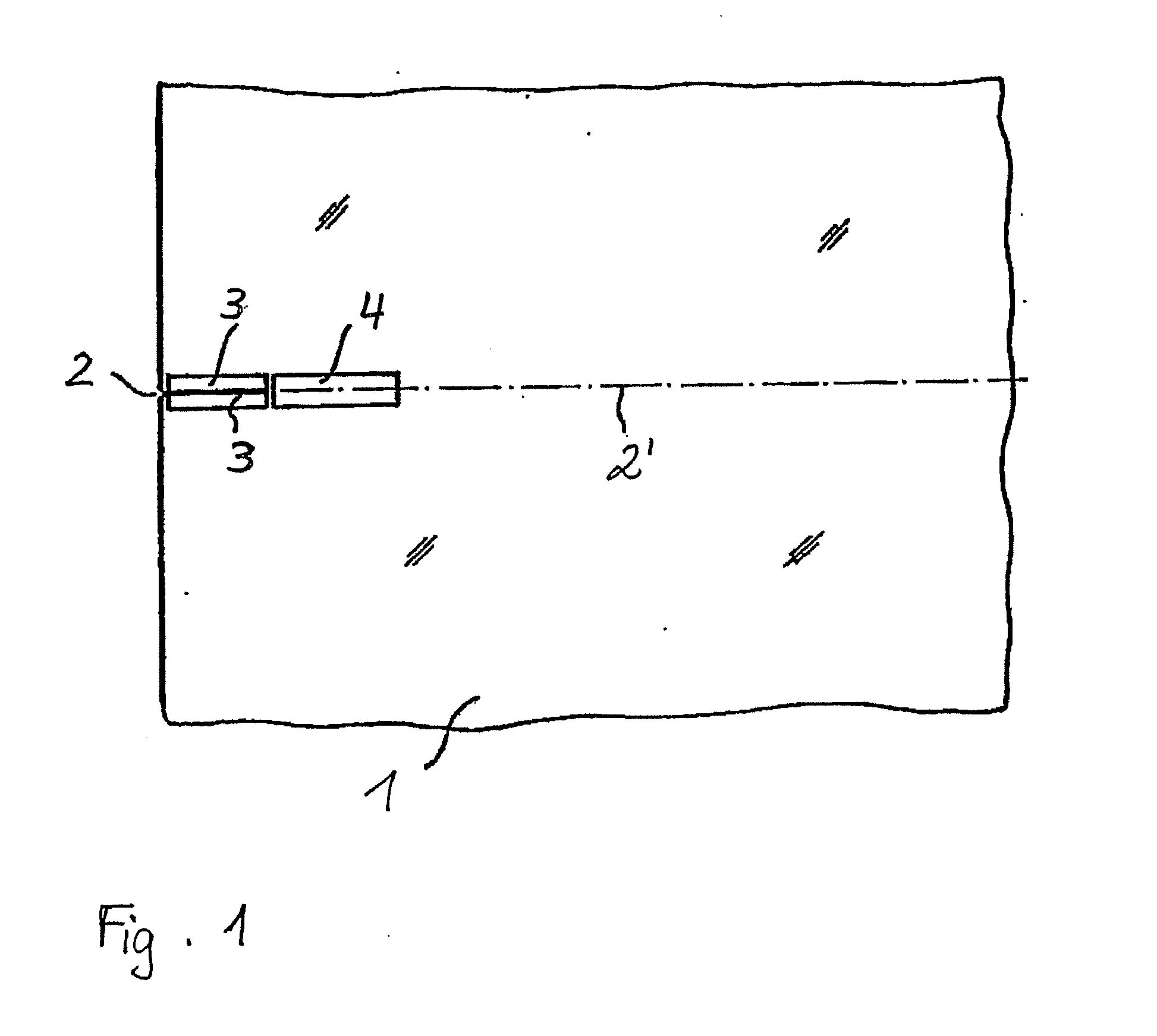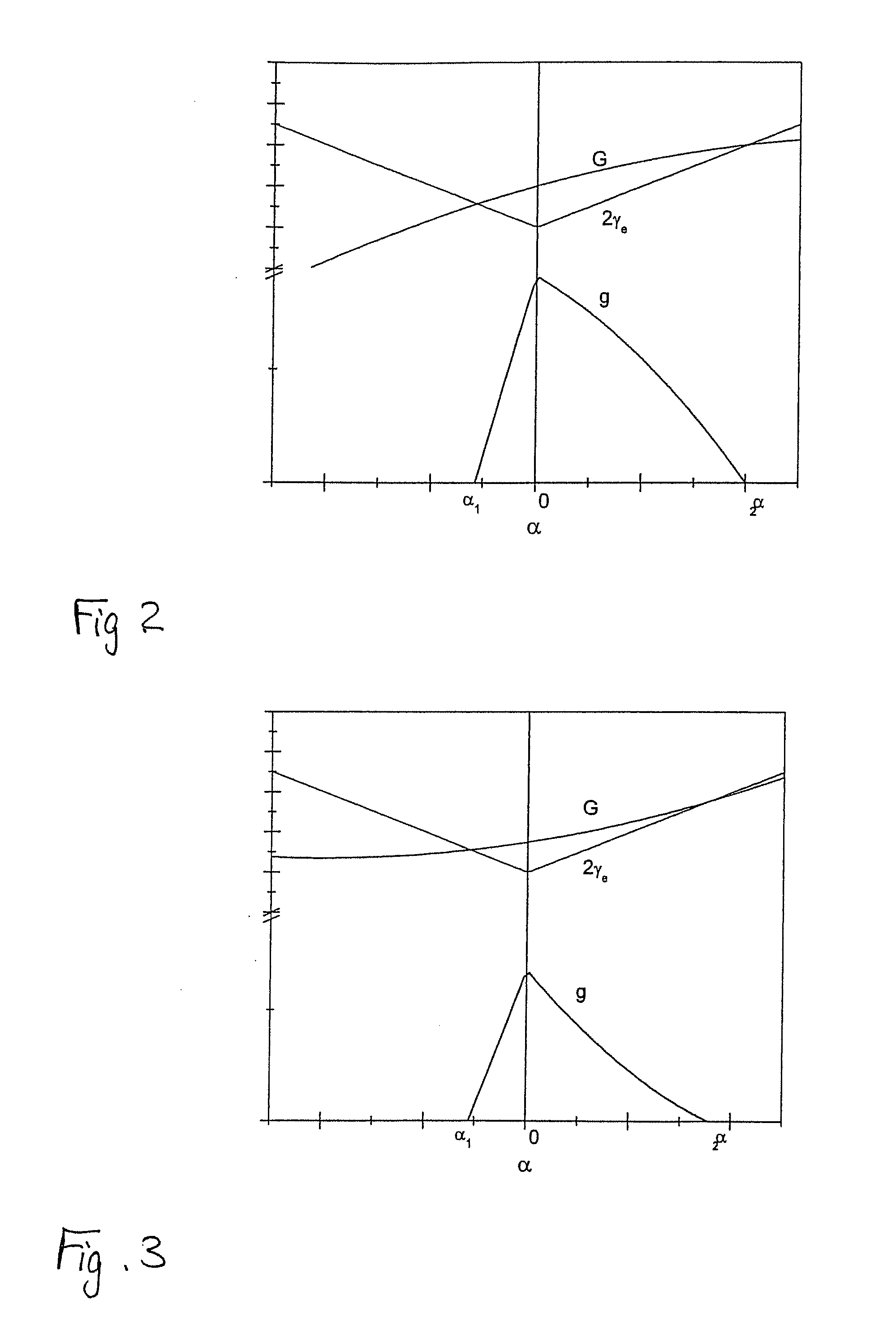Method of cutting single crystals
a single crystal and cutting technology, applied in the field of single crystal cutting, can solve the problems of complex fracture mode, inability to control crack progress, and inability to produce only such cleavage planes in practice, and achieve the effect of sufficient quality of cleavage planes and high precision
- Summary
- Abstract
- Description
- Claims
- Application Information
AI Technical Summary
Benefits of technology
Problems solved by technology
Method used
Image
Examples
Embodiment Construction
[0035]In the following the invention is described by means of an embodiment of a cleaving process of a GaAs-Wafer by means of thermally induced stress fields. At first, the wafer is provided to the cleavage device. The adjustment of the wafer with respect to the cleavage device is performed by virtue of a previously formed marking, e.g., a short flat, which by means of example is grinded and oriented by means of X-ray diffractometry. Thereby an accuracy of the flat orientation with respect to the {110}-cleavage plane of 0.1° can be achieved in practice. Similarly, other markings or short flats perpendicular or in a predetermined relation to the cleavage planes may be considered as pre-adjustment means. The pre-adjustment with respect to the movement direction may be carried out with the help of stops or employing optical methods.
[0036]As becomes schematically evident from FIG. 1, an initial crack 2 is formed in a {110}-cleavage plane of the GaAs-wafer 1. Ideally, the initial crack 2...
PUM
| Property | Measurement | Unit |
|---|---|---|
| Length | aaaaa | aaaaa |
| Structure | aaaaa | aaaaa |
| Surface area | aaaaa | aaaaa |
Abstract
Description
Claims
Application Information
 Login to View More
Login to View More - R&D
- Intellectual Property
- Life Sciences
- Materials
- Tech Scout
- Unparalleled Data Quality
- Higher Quality Content
- 60% Fewer Hallucinations
Browse by: Latest US Patents, China's latest patents, Technical Efficacy Thesaurus, Application Domain, Technology Topic, Popular Technical Reports.
© 2025 PatSnap. All rights reserved.Legal|Privacy policy|Modern Slavery Act Transparency Statement|Sitemap|About US| Contact US: help@patsnap.com



